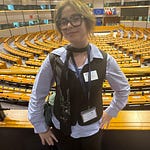Is sexual violence gendered?
Sexual violence has been widely employed across the world for centuries as a war crime. The new age international legislative system in every existing parliament heavily condemns this practice; however , perpetrators within and outside of the domestic sphere still exist in every population. Women’s dignity and innocence especially in war zones is commodified and therefore seen as a viable target. This article considers the question of whether such dignity is only targeted when it belongs to women.
The World Health Organization defines sexual violence as any sexual act, attempt to obtain a sexual act, unwanted comments or advances, or acts to traffic or otherwise directed against a person’s sexuality using coercion, by any individual regardless of their relationship to the victim, in any setting, including but not limited to home and work. It is relevant to note the lack of gendered terminology in this definition, and the emphasis on forced activity . Major legislation tends not to boast a similarly gender-neutral approach.
Copelon states that the concept of rape as a crime against dignity and honor in place of being a crime of violence is a core problem. In this case, the honor of women is in question, cementing the social view that the raped woman is dishonorable. This preconceived notion of the society doubles up when it comes to men being the victim of the same fate. Rape is not just viewed as a crime against the sexual autonomy and the personal agency of a person but has strong societal and cultural connotations around its comprehension.
The rhetoric that men are only seen as perpetrators of sexual violence crimes makes it hard to believe they can also be victims. Sexual violence against men and boys during conflict occurs mainly in detention and imprisonment and is classified as torture rather than sexual violence. While sexual violence against women in conflicts is recognized and understood due to its prevalence, violence against men is underreported. Evidence shows it occurs in nearly every armed conflict, but its extent remains under-researched and unknown. This is due to shame, confusion, guilt, fear , and stigma, as society questions perceived masculinity and discourages men from discussing emotions. The torture and abuse classification used in cases of men facing sexual violence is evident in government reports wherein castration is seen as mutilation and rape as torture, reinforcing the perception that men cannot be subjected to sexual violence. This contrasts with the women’s struggle to recognize rape as torture; in this case, there is a need to view it as simply rape, in addition to it being torture.
Hence, the idea of men being victims of sexual violation is disturbingly entertained rarely . The consequences of them being perpetrators are often seen as not severe enough, which opens up room for conflict regarding the same. Detention and imprisonment frequently replace harsher punishments, and the circumstances as well as the cultural context of the crime in question are ignored entirely .
It is extremely difficult to approach sexual violence against men and non-binary populations from the perspective of legislature. The societal interpretation of the crime questions the perceived masculinity of the victims. The societal construct around masculine identity weighs quite heavy on the victims of the crime as they are supposed to carry the mannerisms that the communities expect them to follow. Male survivors are in danger of threats to their perceived notions of their own masculinity, self-doubt regarding sexual orientation, fear of rejection from the judiciary and society , as well as fear of being able to prevent the abuse should it happen again. The incompatibility between masculinity and victimization occurs both at the level of the attack where the man should have been able to prevent it, and in dealing with the consequences wherein they should be able to cope like a man. Even if the male survivors wish to articulate their suffering they lack the right words for it. The English language is bereft of terms and phrases which accurately describe male rape , which further encapsulates the sexual violence against men broadly .
In the Democratic Republic of Congo and Peru , a major amount of the acts are recorded at the time of arrest or home. The number of CRSV (conflict relates sexual violence) cases from Liberia faced by combatants stands at a staggering 32.6%. In Peru, Syria and northern Uganda, men and boys were sexually violated in their homes and in public, in addition to the imprisonment. Within a war zone, 90% of men have no access to justice. It is also important to consider that 70 states criminalize those who report abuse. The fallacy that sexual violence against men and boys is only primarily perpetrated in detention or captivity takes away from the sexualized nature of these violations and makes it context as well as conflict specific.
Ample data exists to shatter the gendered belief that non-women don’t face a significant portion of all sexual crime in the world. Men, transgender people and gender non- conforming individuals have neither been recognized by the states nor by the international system that has the power to provide them with a support system. Any available support at post-conflict refugee camps is designed to cater to the needs of women. The 2020 Human Rights Watch report on the Syrian conflict further underlines the gravity of the situation. It elaborates on the fact that heterosexual men and boys are vulnerable to sexual violence in Syria, but those who are gay or bisexual- or perceived to be- transgender women are particularly at risk. This report not only challenges the biases of the gendered approach, but also highlights the salience of adopting a gender-neutral perspective. The conflict has formed a strong precedence in acknowledging these violations and creating a global discourse on the same. Whether it was the 2013 UN Security Council Resolution 2106, that stated that CRSV (conflict related sexual violence) also affects men and boys, or the 2019 Resolution 2467 that acknowledged the need for enhanced medical and mental health support for the survivors of sexual violence; the Syrian conflict aided in gaining international attention towards CRSV as a whole and not just the gendered aspect.
The extremely gendered treatment of sexual violence as a phenomenon is a relevant cause for concern. It not only undermines the international conflict legislatures, but also lets down the victims. For centuries, women had to fight a long exhausting battle in order to preserve their rights, autonomy and agency against sexual violence. The men and the non-binary populations are fighting the same battle but in anonymity. It is high time that we as an international community , society and as humanity on the whole stand up against these rudimentary ideologies that deny justice to the victims of a horrendous crime. After all, denial of justice is a crime of its own.
In this episode Tanmaya discusses Men’s expereince of sexual violence in conflict zones and the issues they have to deal with after the war is over. She is a student journalist with us on a placement organised with Department of War Studies, King’s College, London. This article was edited using Lex.page.
Thank you for reading an A4R 🎨 Post. Don’t forget to visit our gift shop here. Every purchase scales our impact and pays our bills.














